| |
De Chirico reinvents the reasonable order of pictures, moving the supporting cast of picture devices to center stage, renorming the subject. The conditions of appearance now elevated to the role of content. |
| |
In any earlier picture, in the reasonable order of things, if a statue cast a shadow there would be no doubt that the statue was the subject and the shadow was the support, that set the object in space. What is new in deC is that something being covered or being seen, shadowed or lit, stacked or deployed are no longer just facts, the way things go: but the meaning itself. |
| |
| |
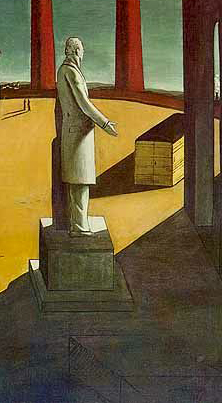
De Chirico, The Enigma of the Day, 1914, Detail |
| |
| |
In De Chirico, the statue/shadow can be co-equal, each conferring meaning on the other, or the shadow may be all we see, implying the unseen object. |
| |
| |
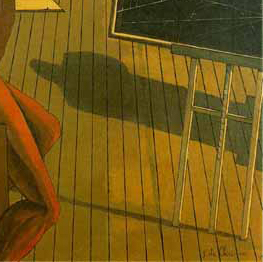
De Chirico, The Seer, 1915, Detail |
| |
| |
In prior pictures, buildings are either subjects as in the works of Pieter Saenredam or useful places to set subjects. |
| |
| |
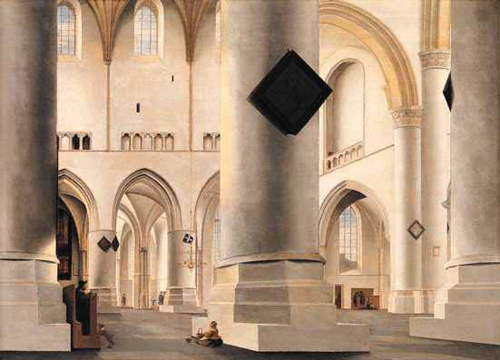
Pieter Saenredam, The Interior of the Grote Kerk at Haarlem, 1636-7. |
| |
| |
In deC’s metaphysics the building and the figure conduct a symmetric exchange. |
| |
| |
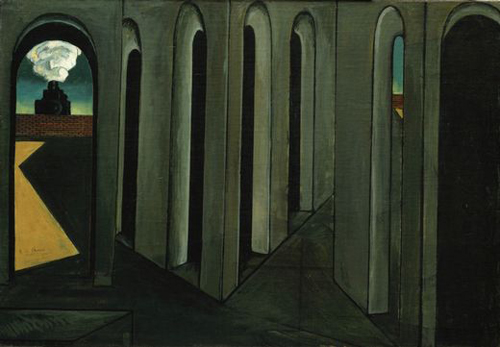
De Chirico, Thw Anxious Journey, 1913. |
| |
| |
“The Enigma of the Oracle” is the first painting to posit a barrier to the nominal subject, in this case the white figure, as the real content. Many paintings have curtains; no prior painting foregrounds the curtain to the role of subject. |
| |
| |
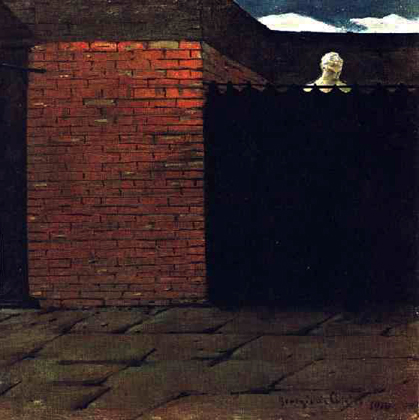
De Chirico, The Enigma of the Oracle, 1910, Detail |
| |
| |
Things, as a matter of fact, are eclipsed by other things: walls, horses, curtains. But here for the first time the missing parts are shifted from being merely matters of fact, the way things are, to assume the charged role of the image’s meaning. |
| |
| |
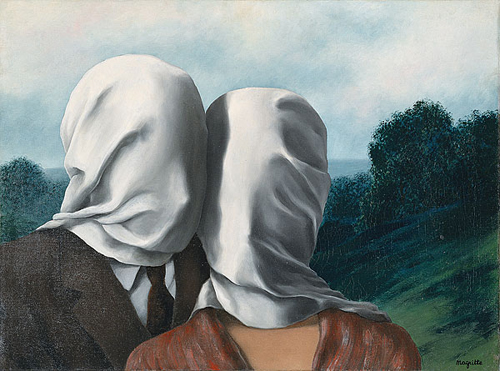
René Magritte, The Lovers, 1928. |
| |
| |

John Baldessari, Blockage (Blue), 2005. |
| |
| |
We are now so used to covering as subject, from Magritte to Baldessari, that we forget that this content was invented in 1910. This reconceiving of painting’s subjects is perhaps most disturbing in the role that the pile comes to have in Guston after World War II. |
| |
| |
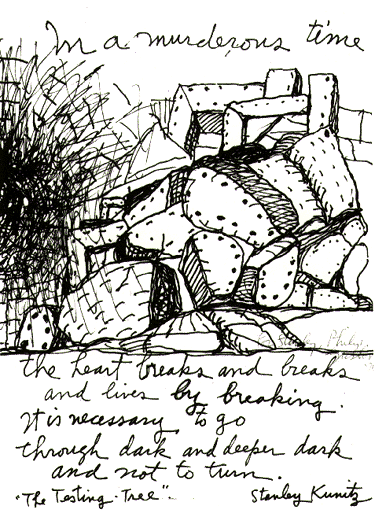
Philip Guston, The Testing Tree, 1976 |
| |
| |
Premonitions of this power are evident in this Russian painting from 1871, “The Apotheosis of War.” No people, no action, no dynamic composition, just the stack casting a shadow in the middle of the picture. |
| |
| |
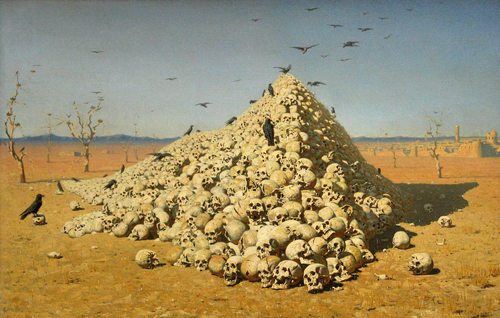
V.V. Vereshchagin , Apotheosis of War, 1871. |
| |
| |
Then its unlikely companion Monet’s Haystacks, which offers the banal effrontery of a subject with no edification, just useful formal existence. |
| |
| |
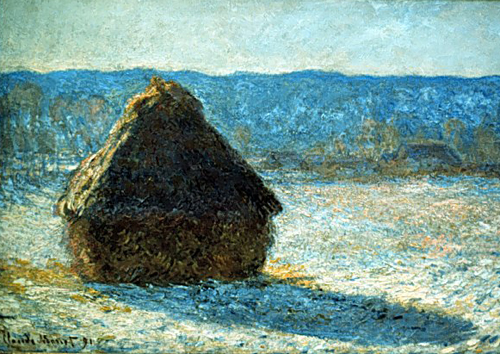
Claude Monet, Grainstack, 1891. |
| |
| |
But with deC’s stacks we see the pile becoming an icon of modern life, from endless industrial dumps to mass graves. |
| |
And this icon was born in the early days of the 20th Century in the mind of Giorgio De Chirico. |
| |
| |
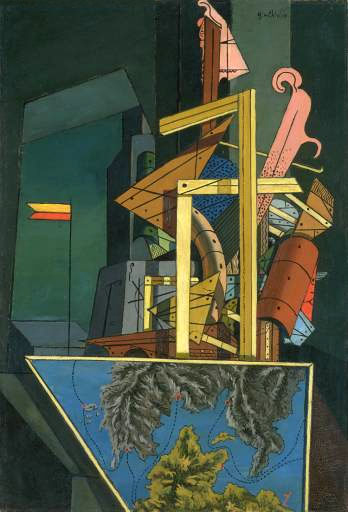
De Chirico, Metaphysical Interior, 1916, Detail |
| |
| |
|
| |
A serendipitous find while searching Google Images: this Guston suggests I am on the right track. |
| |
| |
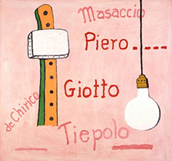
Philip Guston |
| |
| |